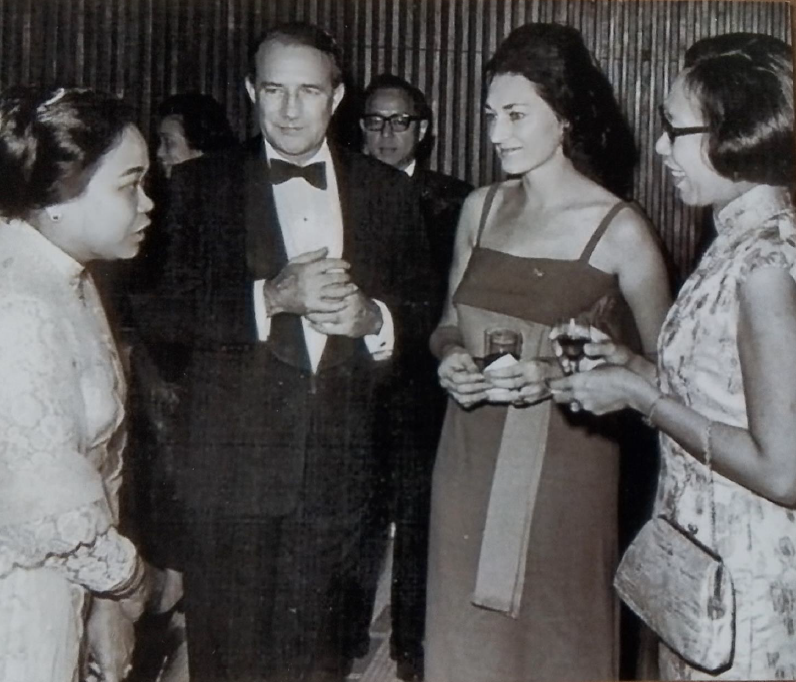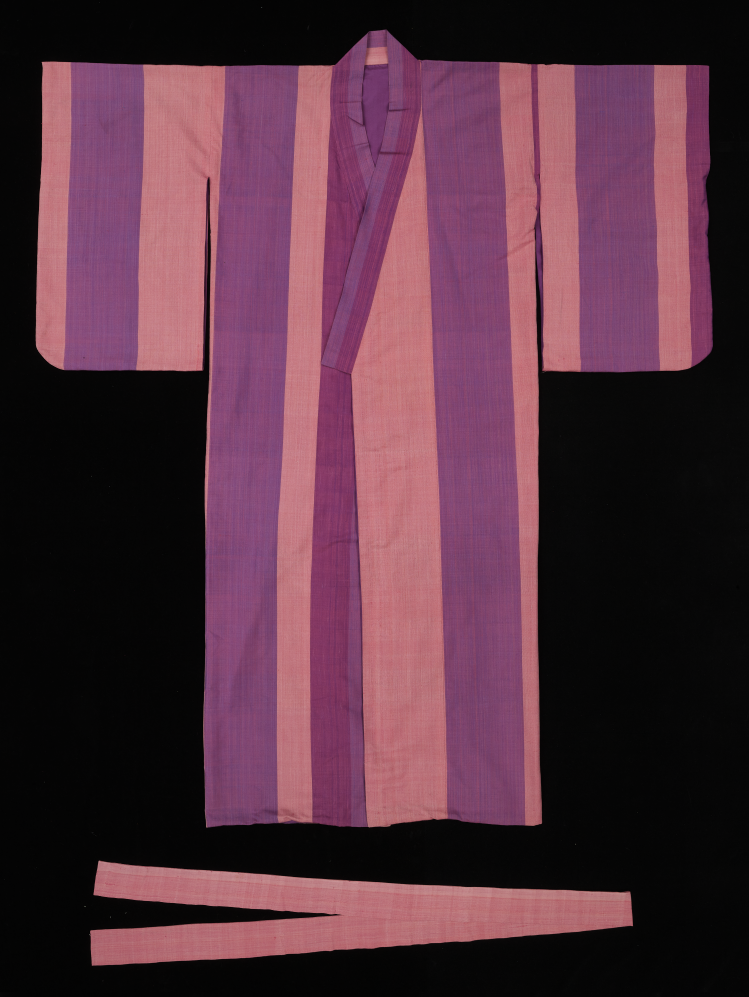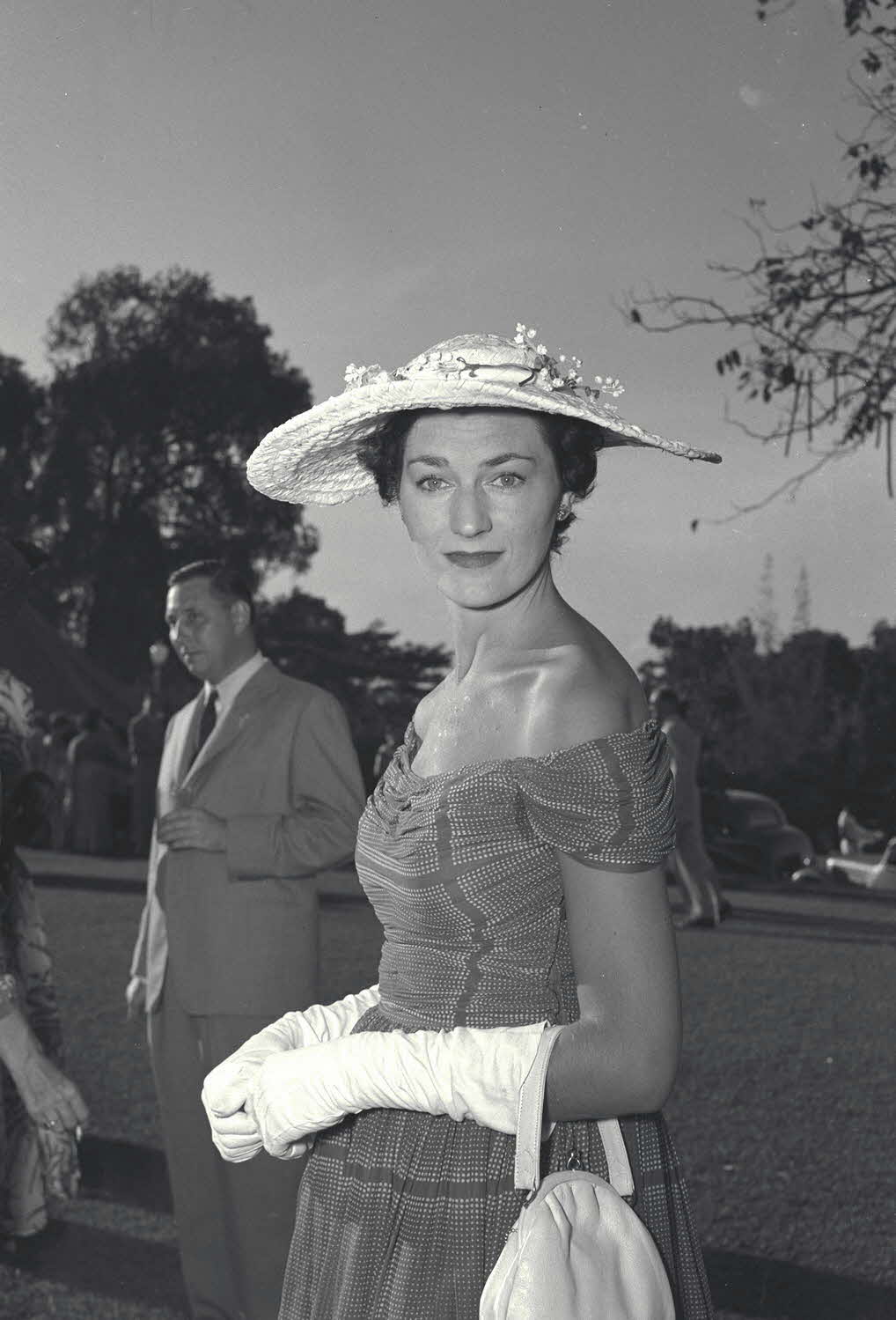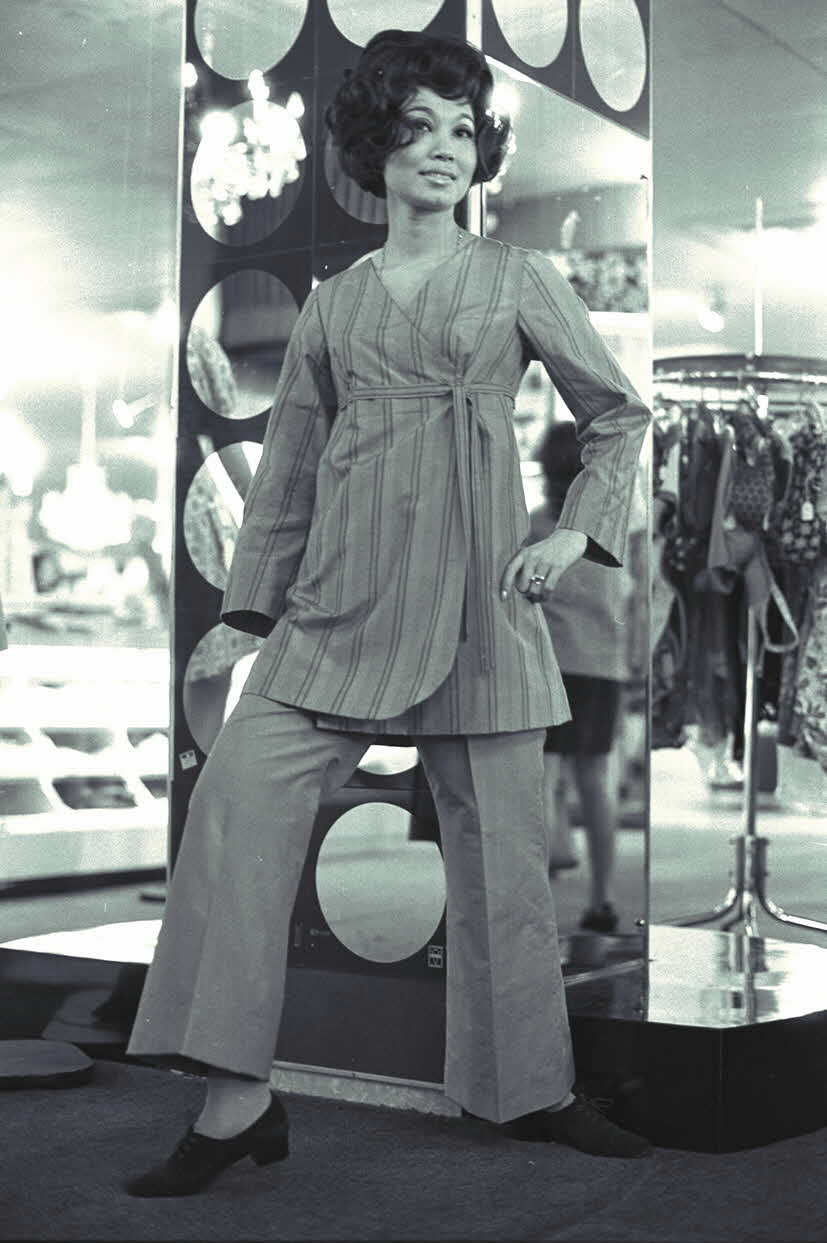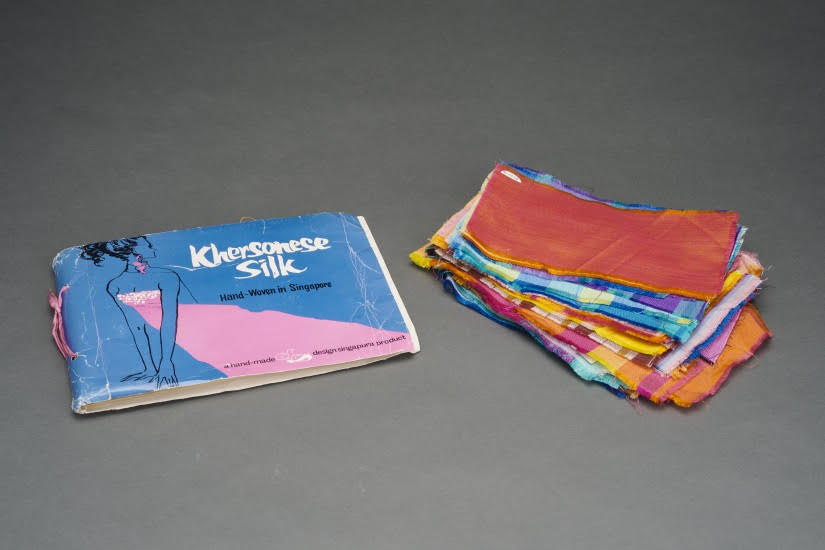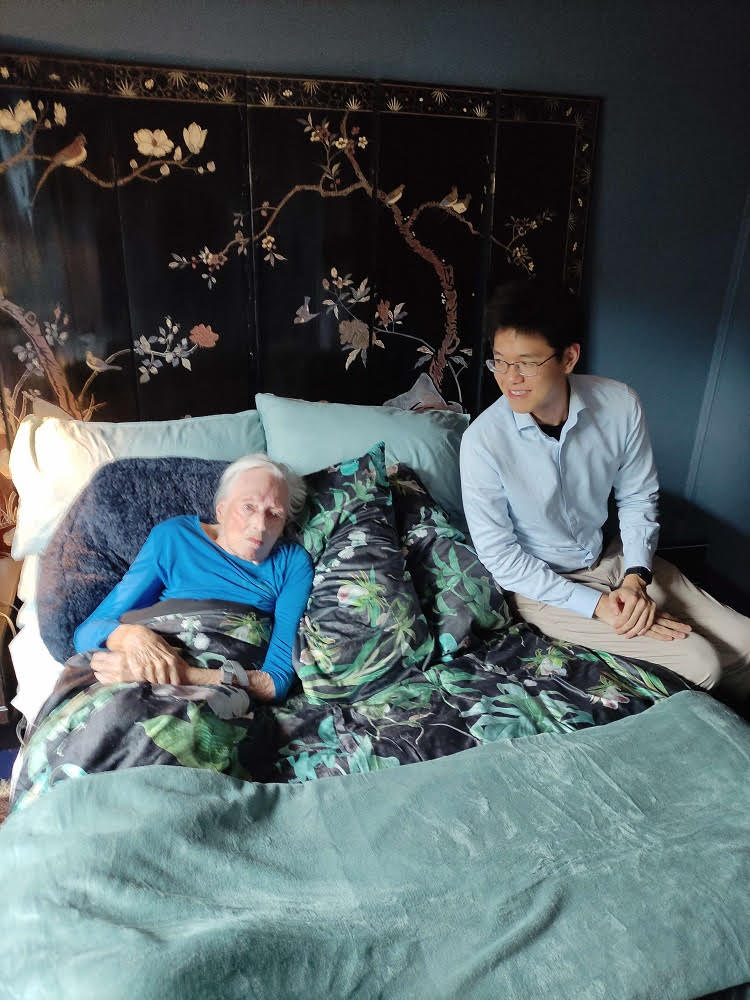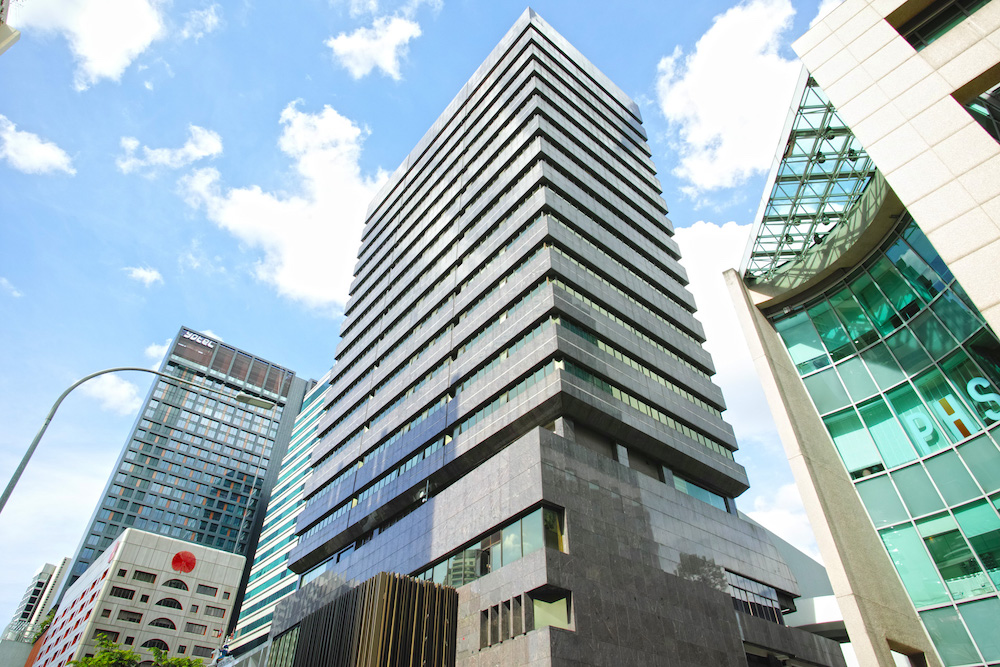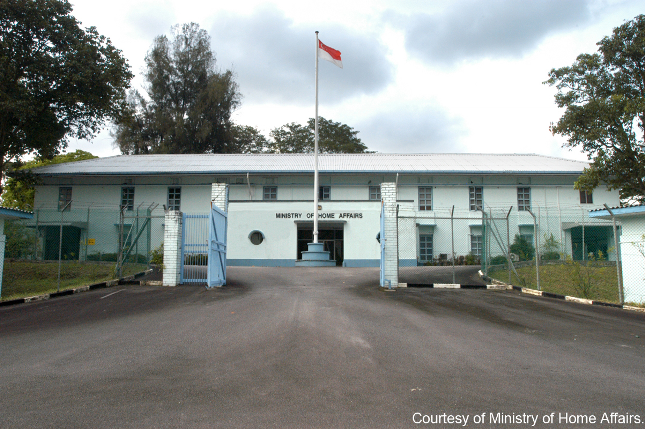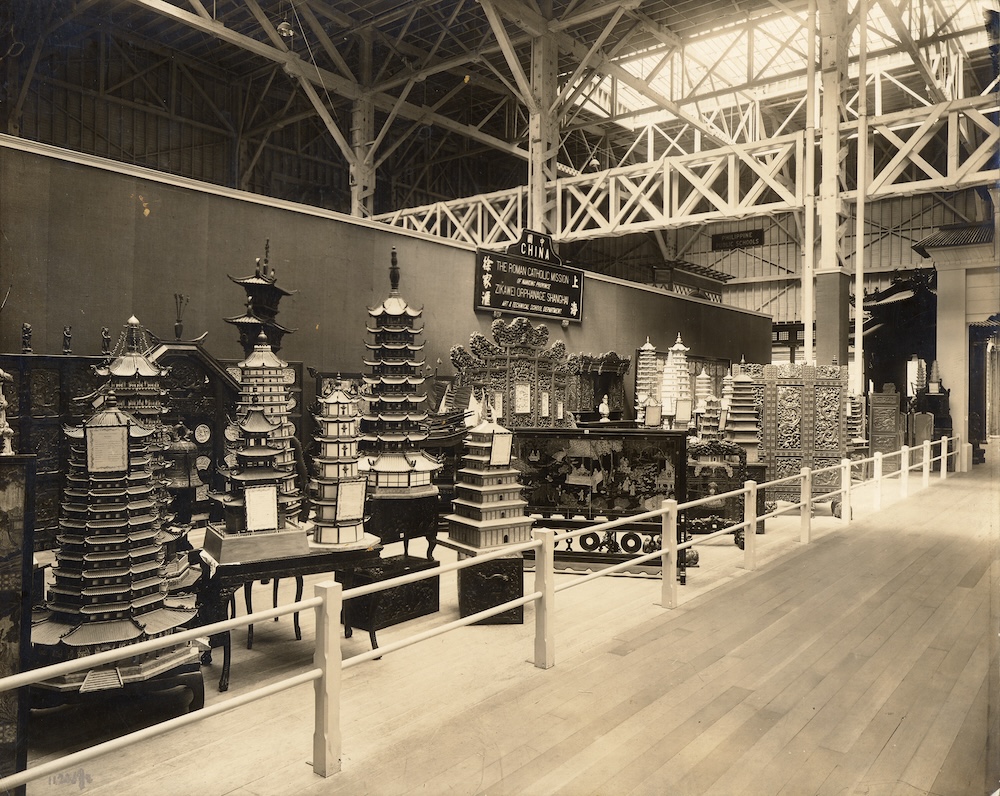TL;DR
This article traces the fascinating history of Singapore-made “Khersonese Silk”, prompted by a message sent to the Founders’ Memorial team. In the process of acquiring several Khersonese silk kimonos and fabric samples donated by Patricia Mary Meadows, Nicholas Phoon discovers the story of a bold attempt to produce high quality, locally made tourist souvenirs for Singapore’s early tourism drive.
A Khersonese silk kimono designed by Mrs Patricia Mary Meadows, with autumn leaf motifs. Gift of Patricia Mary Meadows. Collection of National Museum of Singapore, National Heritage Board.
A Fascinating Find
In June 2023, the Founders’ Memorial (FM) team received an intriguing message from a potential artefact donor, regarding several garments she had discovered in her uncle’s house. It read as follows:
“Our uncle, Percival Herbert Meadows, whilst working for Lee Kuan Yew, set up ways to bring wealth to Singapore. One […] was Khersonese silk. We have the story and kimono style wraps that the V&A [Victoria and Albert] Museum in London thought [they] would be more suitable for Singapore. Please would you let us know if there is any interest. Thank you. Ronni Meadows.”
This short paragraph immediately sparked interest among the team. Who was Percival Herbert Meadows, and what was his relationship to Singapore’s founding leaders? Why was he involved in “bringing wealth to Singapore”, and what role did Khersonese silk play?
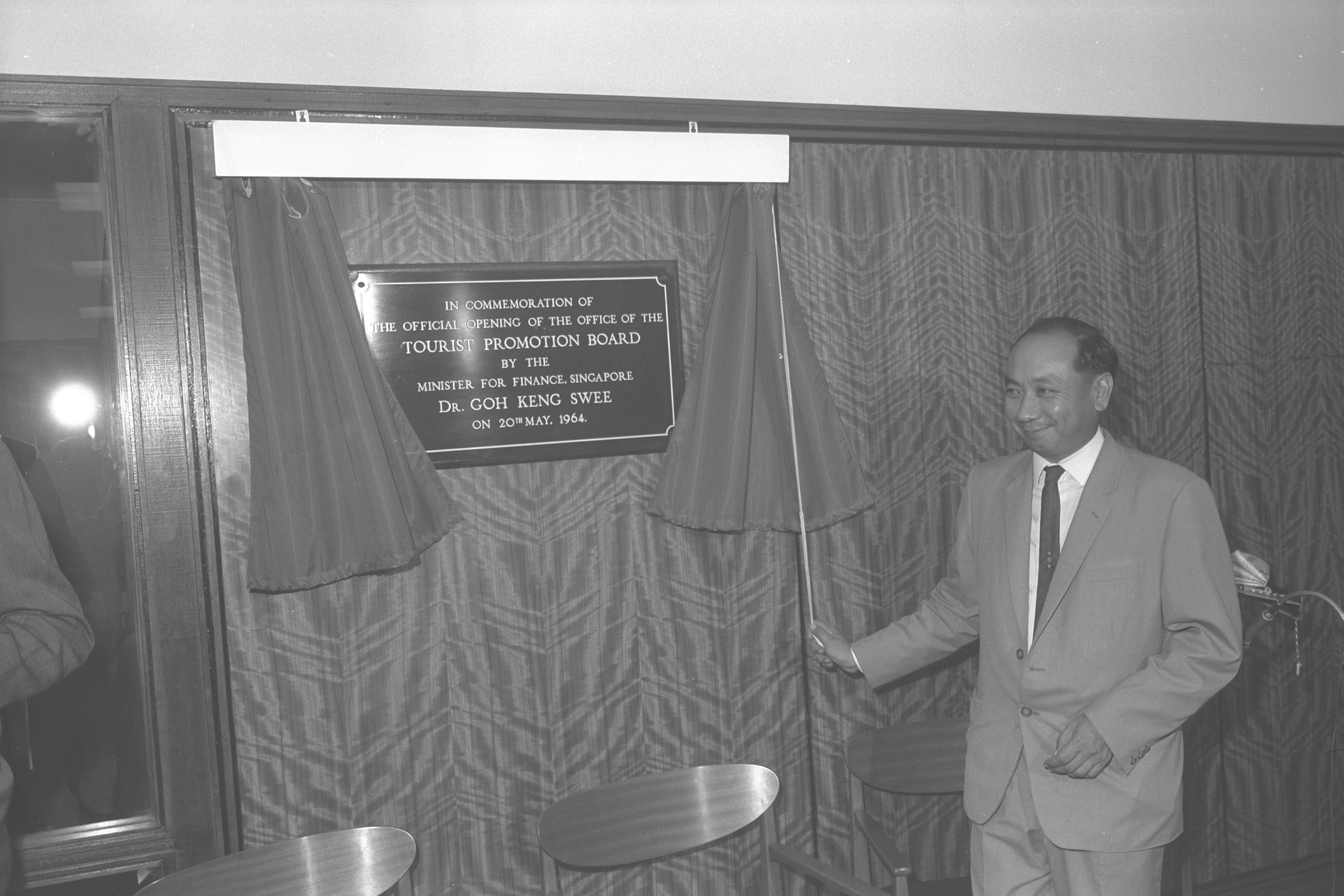 "Minister for Finance Dr Goh Keng Swee at the opening of STPB’s office at John Little’s Building, Raffles Place, 1964. Ministry of Information and the Arts Collection, courtesy of National Archives of Singapore.
"Minister for Finance Dr Goh Keng Swee at the opening of STPB’s office at John Little’s Building, Raffles Place, 1964. Ministry of Information and the Arts Collection, courtesy of National Archives of Singapore.
P. H. Meadows, Dr Goh Keng Swee, and Singapore’s Early Tourism Drive
Percival Herbert (better known by his initials P. H.) Meadows was a British administrator who stayed on to serve in Singapore’s post-independence civil service. He first joined the Malayan civil service in 1948, eventually rising to become Chairman of the Singapore Tourist Promotion Board (STPB) from 1967 to 1969.[1] During his stint at the Social Welfare Department in the 1950s, Meadows found that many young women were in need of employment, and believed that light industries like silk weaving provided a good avenue for them to channel their energies. This belief would continue to influence him when he later called, as STPB Chairman, for ideas from the private sector on how to boost tourism.[2] Two overriding imperatives —job creation for women and the promotion of the tourist trade —were likely on his mind.
Tourism promotion was, in 1960s Singapore, very much in its infancy. Indeed, when the Singapore Tourist Promotion Board was formed in 1964, then-Minister for Finance Dr Goh Keng Swee lamented that, despite the upsurge in postwar tourism, Singapore’s share [of the international tourist trade] “is today less than what it could be”. Growing the tourist industry would also create jobs for the rapidly increasing number of job-seekers registered with the Ministry of Labour, which rose from 42,777 in 1964 to 71,705 by 1967.[3] Most pertinently, Dr Goh was conscious of the importance of giving tourists value for money, and suggested the production of local, as opposed to imported, souvenirs. In his mind, it was important to identify “a symbol or an emblem which can serve as the theme in the production of tourist souvenirs and mementos”, so as to “give Singapore an identity in the minds of tourists.[4]
Design Singapura and the Origins of Khersonese Silk
It was against such a backdrop that a company, Design Singapura, was founded in 1968 to promote local arts and crafts.[5] The brainchild of entrepreneur Donald Moore, Design Singapura came to life after Moore responded to Meadows’ call for private sector proposals with plans for a combined craft workshop, retail centre, and tourist attraction. Here, Moore envisioned, tourists and locals could witness craftsmen at work, and local crafts—ranging from silk to ceramics and woodworks —could be marketed as souvenirs.[6]
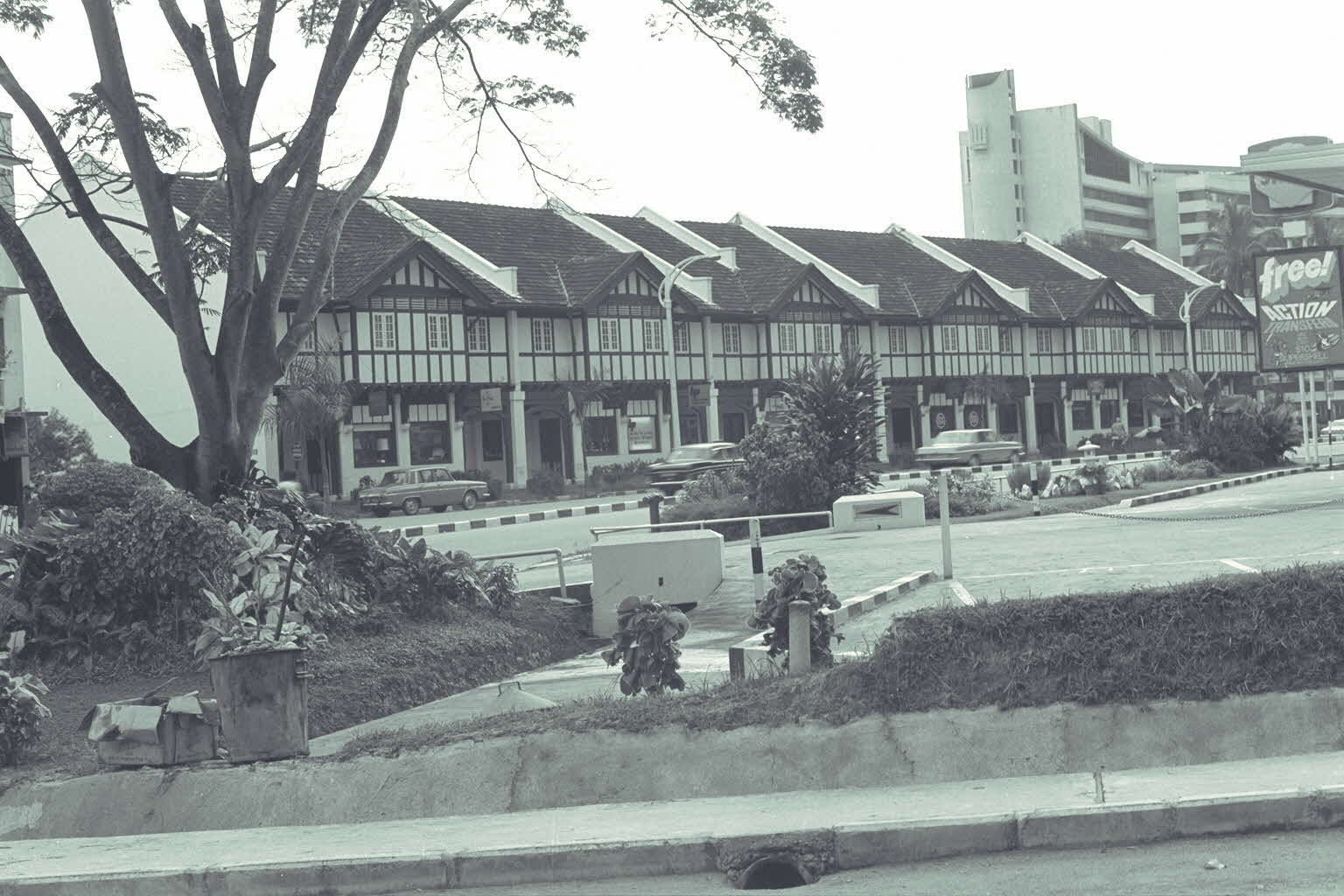
It did not take long for STPB and the Economic Development Board, jointly guided by Dr Goh as Finance Minister, to respond. Enthused by Moore’s proposal, the Government agreed to rent out two units at Tudor Court, originally government quarters for civil servants, at market rate.[7]P. H. Meadows, as a keen advocate of the project, was appointed to sit on the company’s Board of Directors to represent the STPB.[8] However, it was Meadows’ wife, Patricia Mary Meadows, who was to breathe life into Design Singapura’s plans to create a uniquely Singaporean handwoven fabric. Having come across the ancient Greek name for the Malayan peninsula—the Golden Chersonese or Khersonese—in a then-recently published book, Mrs Meadows suggested the name Khersonese silk.[9] She also served as production manager of the Khersonese silk factory located off MacPherson Road.[10]
Mr and Mrs Meadows with Mdm Kwa Geok Choo, speaking to a guest at an event, 1960s. Mrs Meadows’ dress here was made from Khersonese silk. Courtesy of Ronni Meadows.
Selling Khersonese Silk to Singapore and the World
The Khersonese silk products quickly made a splash. At its launch in January 1969, the Straits Times reported on the “stunning range” of Singapore-made silks which were now available at the Khersonese Silk Shop at Tudor Court. Design Singapura’s in-house creative designer, Mrs Myrna Wong, was quoted in the press touting the local silks offered as having “an identity of their own”, each bringing out “rich Eastern traditions in a modern, contemporary way."[11] Khersonese silk apparel was also a highlight of high-profile fashion shows, intended to highlight local Singaporean designers and boutiques, and was available at a range of retailers including Robinson's.[12] In fact, so iconic was Khersonese silk that it came to be cited in Robert Yeo’s “Turn of the Decade 1969-70” as a reference to Singapore’s increasing material wealth, albeit in tension with what the poet saw as a corresponding shift away from the idealism of earlier years:
We now in Singapore can have luxuries:
Golden mile or shoe, khersonese silk, Marco Polo…
But not the ideological type. Not in the seventies.
In this decade ours must be the politics
Of consolidation. In the sixties, remember,
The decade that spawned slogans and believed in them,
There was a marriage and there was a divorce.[13]
Extracted from “Turn of the Decade 1969-70”, by Robert Yeo
A ready-made Khersonese silk kimono for general sale, as it would have been available at the Khersonese silk shop or other stores such as Robinson’s. Gift of Patricia Mary Meadows. Collection of National Museum of Singapore, National Heritage Board.
Not content to just manage the weavers at the Khersonese silk factory, Mrs Meadows found herself wanting to do more to sell Singapore to the world. After all, she had a predilection to cultural expressions: following her arrival in Singapore in 1952, she had taken Chinese painting lessons with Chen Wen Hsi to expose herself to different artistic influences. She now surmised that a small batch of custom-made silk kimonos, sold by word of mouth to high society figures the influencers of the day—might help raise the profile of Khersonese silk and the country of its birth. So, inspired by the trends of the 1960s with their use of bright colours and flowery designs, and by the work of British designers Zandra Rhodes and Mary Quant, Mrs Meadows set to work putting together her own Khersonese silk kimonos. Vibrant hues and Japanese-inspired geometric designs recalling natural elements came together to make unique and striking apparel, with several outfits eventually sold to British socialites.
Mrs Patricia Mary Meadows at a garden party, 1954. Source: The Straits Times © SPH Media Limited. Permission required for reproduction.
A model in a Khersonese silk pantsuit featured at the “Made in Singapore” exhibition, 1969. Source: The Straits Times © SPH Media Limited. Permission required for reproduction.
An Idea Out of Its Time
Unfortunately, like many other fashion trends, by 1973 the public demand for Khersonese silk had waned. This was due in no small part to the prohibitive cost of producing silk locally. Indeed, profit margins for Khersonese silk products, measured against the high cost per yard of cloth, had never been significant to begin with.[14] Moreover, it was alleged that Singaporeans were prejudiced against locally made products, with the average Singaporean consumer purportedly favouring established Thai silks. [15]
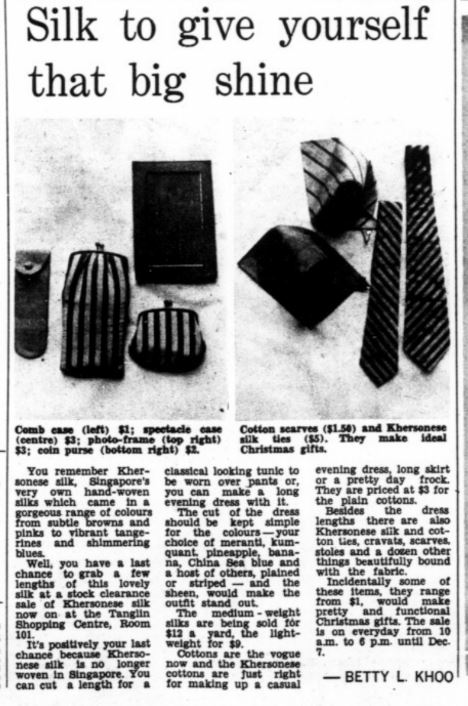
An article in New Nation dated 28 November 1973, highlighting some of the items (such as ties and purses) available at the final clearance sale for Khersonese silk items. Source: New Nation © SPH Media Limited. Permission required for reproduction.
With the benefit of hindsight, this labour-intensive silk-weaving experiment was also arguably ill-timed, as unemployment quickly receded following the rapid influx of Multi-National Corporations into Singapore by the early 1970s.[16] The year after Khersonese silk was launched, Minister for Science and Technology Dr Toh Chin Chye called on Singaporeans to focus, instead, on technical skills needed for the complex manufacturing of higher-value goods.[17]1970 was also the year when the well-known Rollei factory began operations in Singapore, setting the stage for industrial activity to move up the value chain.[18]Although the original concept for a full-fledged handicraft centre and tourist attraction was resurrected in 1976 in the form of the Singapore Handicraft Centre, this later initiative—similarly sited on Tanglin Road—never really caught on, and was gradually wound down in the 1990s.[19]
Bringing Khersonese Silk Home
Today, while the only remaining traces of the original Design Singapura project are the aging walls of Tudor Court, its spirit lives on vicariously in new initiatives like Design Orchard, established in 2019 to groom designers in the local lifestyle and fashion industries. But what of the actual Khersonese silk kimonos which had blazed a trail in Singapore’s fashion scene? For four decades following the Meadows’ retirement and relocation to Norwich, UK, in the 1980s, they lay neatly stacked in a spare room, their significance lost to time. In 2023, however, a chance discovery by Mrs Meadows’ niece, Ronni, prompted an exchange of emails which brought the kimonos to the attention of the Founders’ Memorial.
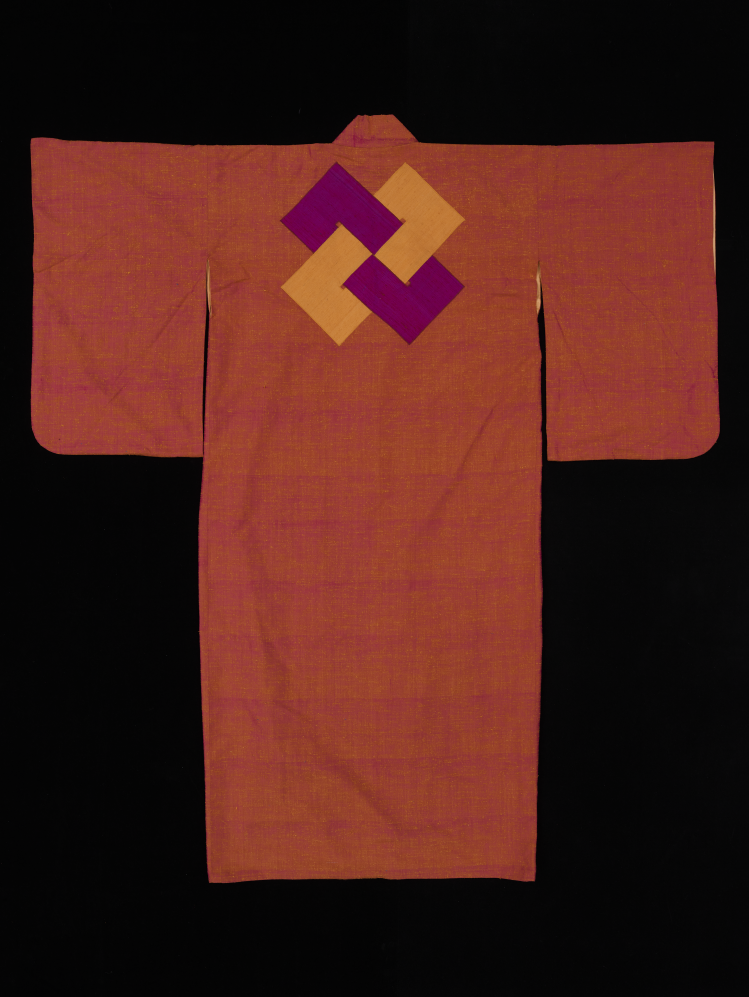
A Khersonese silk kimonos designed by Mrs Patricia Mary Meadows, featuring a geometric pattern. Gift of Patricia Mary Meadows. Collection of National Museum of Singapore, National Heritage Board.
A flurry of calls and messages later, a team from the Founders’ Memorial finally arrived in Norwich to view and assess the garments. The warm welcome accorded by Mrs Meadows and her niece and nephew Ronni and Cary more than made up for the rainy weather. Mrs Meadows was eager to hear more about how Singapore had changed over the years, and I shared as much as we could over a lunch of curry puffs. After bidding goodbye to the Meadows, five of Mrs Meadows’ creations, an original fabric swatch book, and an additional kimono formerly on sale at the official Khersonese silk shop were hand-carried back to NHB’s Heritage Conservation Centre. Today, they form part of the National Collection.
An original fabric swatch book containing the different patterns of Khersonese silk on offer by Design Singapura. Gift of Patricia Mary Meadows. Collection of National Museum of Singapore, National Heritage Board.
The story of Khersonese silk and Design Singapura is arguably representative of the boldness and daring which characterised early post-independent Singapore. There were no ready-made answers or standard operating protocols for our first generation of leaders and civil servants, who had to feel their way forward, experimenting with interesting ideas without fear of failure. Our founding leaders also had to be receptive and open-minded, even when it came to working with former British administrators, who in other postcolonial societies were summarily deemed persona non grata. In line with the Founders’ Memorial’s mandate to present stories which typify the pioneering spirit and ethos of our founding generation, the team is proud to have been given the chance to bring the Khersonese silk garments—and this story—home to Singapore.
The Founders’ Memorial team with Mrs Meadows at her home in Norwich in October 2023. Courtesy of Ronni Meadows.
The Founders’ Memorial was saddened to learn of the passing of Mrs Patricia Mary Meadows in January 2024. We are grateful for her generous donation, and for sharing with us the fascinating story of Khersonese silk.
Notes
- “A Call for Ideas… Singapore’s ‘boost tourism’ drive”, The Straits Times [henceforth, ST], 6 April 1967, 4; “Runme Shaw now head of Tourist Board”, ST, 3 March 1969, 5; “Meadows heads honours list for tourism growth”, ST, 9 August 1969, 1.
- “A Call for Ideas…”, ST.
- “42,700 on Singapore's waiting list for jobs”, ST, 10 February 1964, 11; “71,000 in jobs queue at end of last year”, ST, 6 February 1967, 6.
- Singapore Government Press Statement, “Address by Dr. Goh Keng Swee at the Luncheon given by the Singapore Tourist Association” (speech, Singapore, 31 January 1964), National Archives of Singapore, PressR19640131c.
- Donald Moore, “Design Singapura”, n.d., TPB/P/34/68, National Archives of Singapore; P. H. Meadows, “Scheme Design Singapura Limited”, 3 April 1968, TPB/P/34/68, National Archives of Singapore.
- Donald Moore, “Design Singapura”, n.d., TPB/P/34/68, National Archives of Singapore; “This man Moore”, New Nation, 11 August 1976, 8.
- E. Khoo Cheng Lock, “Re: Design Singapura (Private) Ltd.”, 30 October 1968, TPB/P/34/68, National Archives of Singapore.
- T.H.H., “Design Singapura”, 24 October 1968, TPB/P/34/68, National Archives of Singapore.
- The Golden Khersonese: studies in the historical geography of the Malay Penninsula before A. D. 1500 (Kuala Lumpur: University of Malaya Press, 1961).
- “Khersonese silk on display”, ST, 25 November 1973, 9; “Now a silk for all seasons”, ST, 18 May 1969, 15.
- “Now a stunning range of S'pore-made silks”, ST, 23 January 1969, 12; “A better deal for tourists hunting for souvenirs”, ST, 23 January 1969, 12.
-
“Fashion sparklers with emphasis on Oriental fabrics”, ST, 10 July 1969, 16; “Fashions”,
ST, 29 June 1969, 15; Page 14 Advertisements Column 3, ST, 29 March 1970, 14. - Robert Yeo, Leaving Home, Mother: Selected Poems (Singapore: Angsana Books, 1999), 69-70.
- T.H.H., “Design Singapura Handicrafts”, 29 November 1968, TPB/P/34/68, National Archives of Singapore; “Now a silk for all seasons”, ST.
- “Now a silk for all seasons”, ST.
- “Look what’s happened at Jurong”, New Nation, 1 September 1972, 17.
- “'Plan for the 70s' call to Spore industries”, ST, 1 November 1970, 1.
- “Rollei to invest $149 m Spore by '80”, ST, 5 May 1971, 11.
- “Showcase of Asian arts”, ST, 25 September 1976, 32; “Centre hit by poor business”, The Business Times, 17 June 1977, 11.




